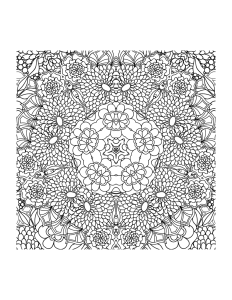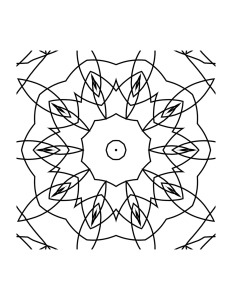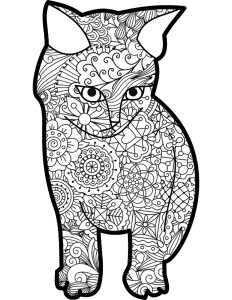Coloring can be helpful for calming anxiety because it engages the mind in a focused and meditative activity. When you color, your attention is directed to the task at hand, which can help distract from worrisome thoughts and reduce feelings of anxiety. Additionally, the repetitive motion of coloring can induce a state of relaxation similar to meditation, slowing down the heart rate and reducing stress levels. The act of coloring also stimulates the brain to produce dopamine, a neurotransmitter associated with pleasure and reward, which can promote feelings of happiness and well-being. Overall, coloring provides a soothing and therapeutic outlet for managing anxiety by promoting mindfulness, relaxation, and creativity.
For adults, it is often best to color in detailed pictures as this allows the best distraction from anxiety. Of course if the level of detail is too much for you, feel free to choose less detailed pictures, whichever allows you to color in with best focus. Some people prefer to color abstract pictures, while others prefer animals or landscapes.


 Mindfulness
Mindfulness
Coloring encourages mindfulness, which involves being fully present in the moment without judgment. By focusing on the colors, lines, and shapes as you color, you’re practicing mindfulness, which can help reduce anxiety by grounding you in the present and allowing you to let go of worries about the past or future. There are a number of books you can get with a mix of detailed and less detailed pictures for coloring. The three mentioned below have a picture on one side of the page and an affirmation or a question on the reverse, to allow you to consider how best to deal with anxiety. This also allows you to color in using whichever type of pencil or pen that suits you best. The ink from some pens bleeds through to the other side of the paper, so if you prefer those pens, you will not have to choose which picture you want to color. These books are Parrots and Penguins, Mythology, Fantasy and Matryoshka, and Jungles and Giraffes.
Relaxation
Engaging in a calming activity like coloring can trigger the body’s relaxation response, which counteracts the stress response. This can lead to lower levels of cortisol, the hormone associated with stress, and a decrease in overall feelings of tension and anxiety.
Self Therapy
Coloring is a form of art therapy, which has been shown to have numerous psychological benefits, including stress reduction, emotional expression, and self-discovery. Art therapy can provide a non-verbal outlet for processing emotions and exploring inner thoughts, which can be particularly beneficial for individuals with anxiety.
Color Anywhere
Coloring is a simple and accessible activity that can be done almost anywhere with minimal supplies. Whether you’re at home, work, or traveling, you can easily bring a coloring book and some colored pencils or markers to help manage anxiety during moments of stress or overwhelm.
Creativity
Coloring allows for creative expression without the pressure of creating something perfect. You can choose colors, patterns, and designs based on your preferences and mood, giving you a sense of control and autonomy. This can be empowering and uplifting, especially for individuals who feel overwhelmed or powerless in the face of anxiety.
Social or Solitary
Coloring can also be a social activity, providing an opportunity for connection and camaraderie with others. Joining a coloring group or sharing your colored pages online can foster a sense of belonging and support, reducing feelings of isolation and loneliness often associated with anxiety. It can also be done in solitude if this is less stressful for you.
Overall, coloring offers a holistic approach to managing anxiety by engaging the mind, body, and emotions in a soothing and enjoyable activity.